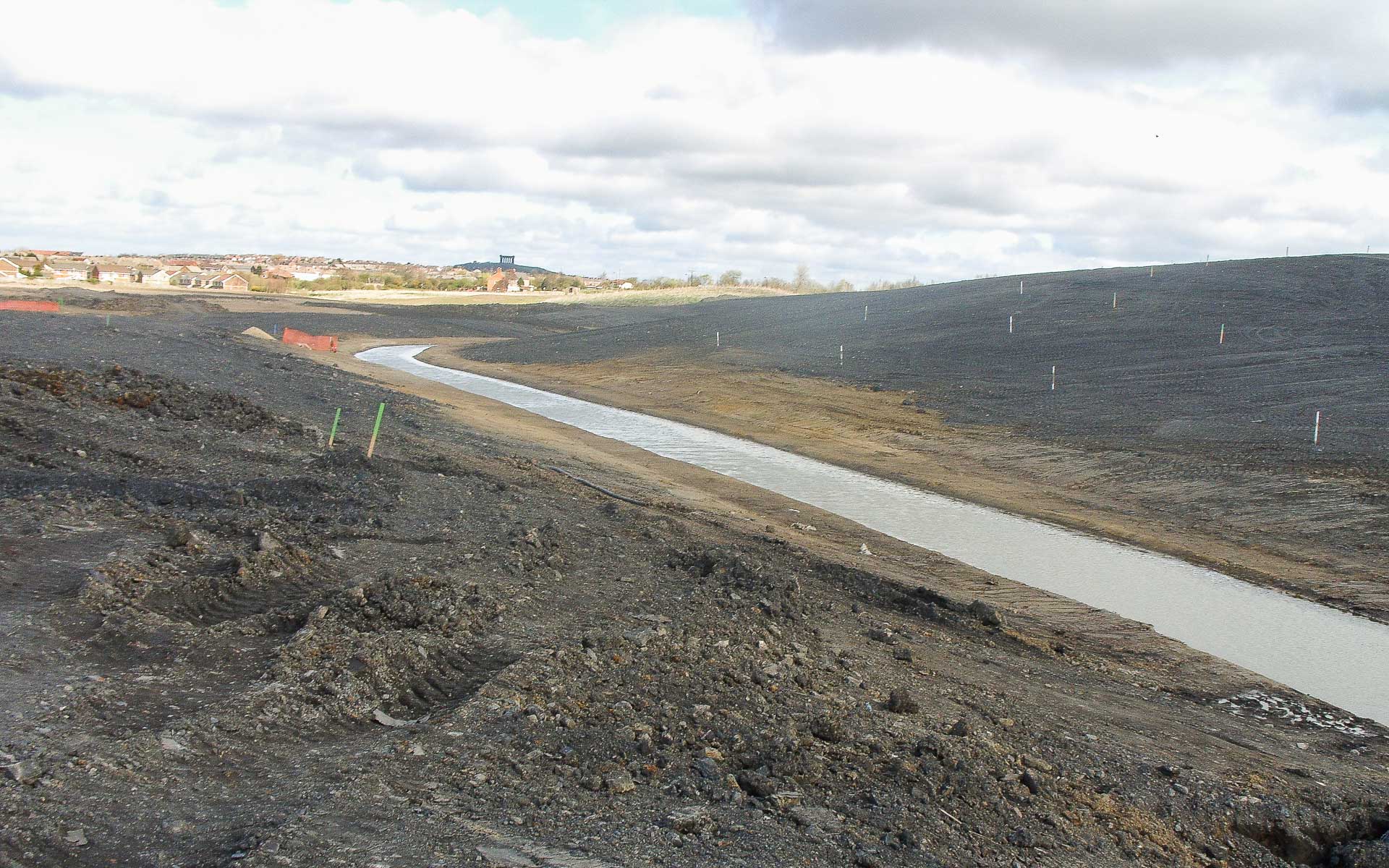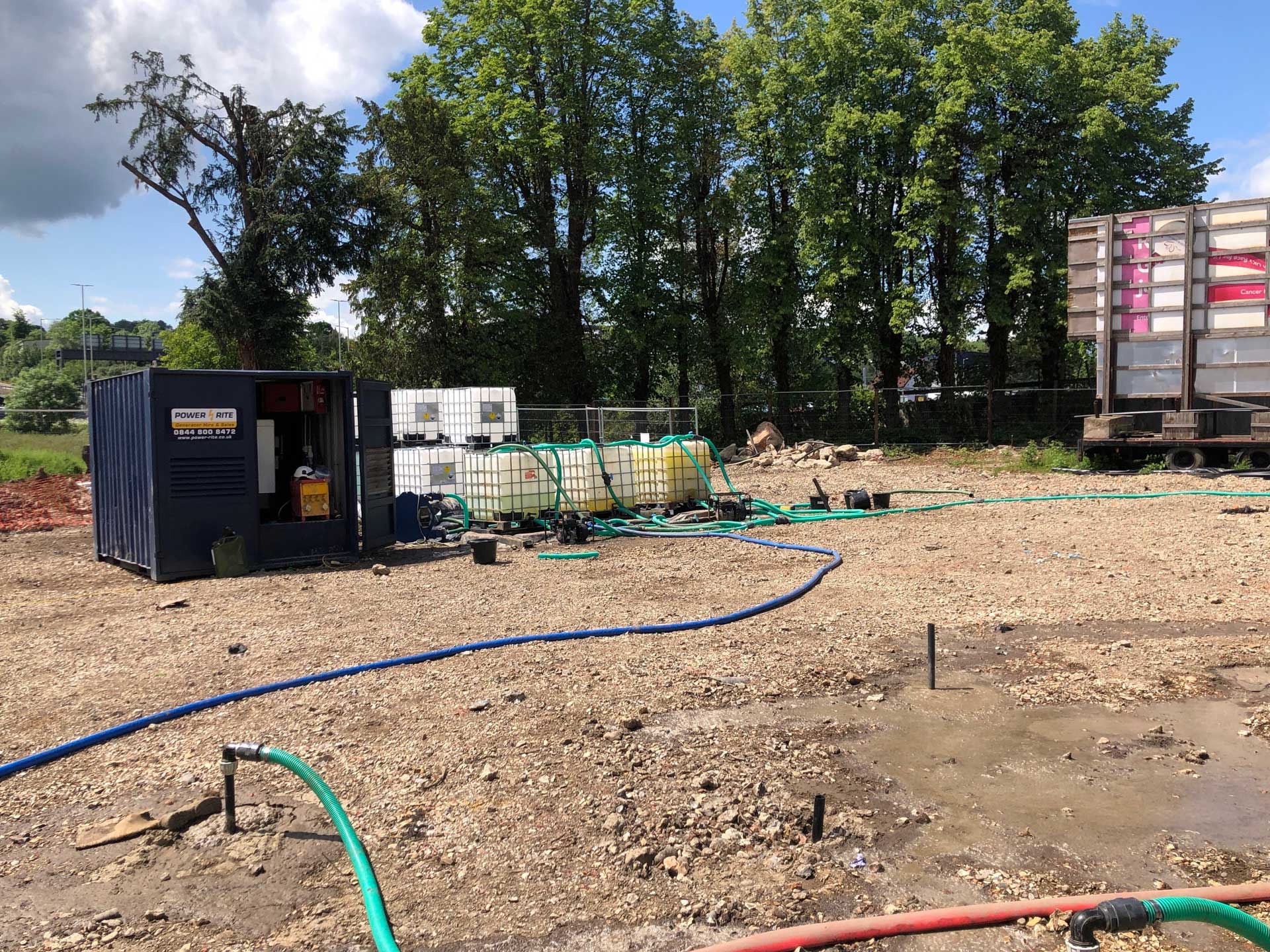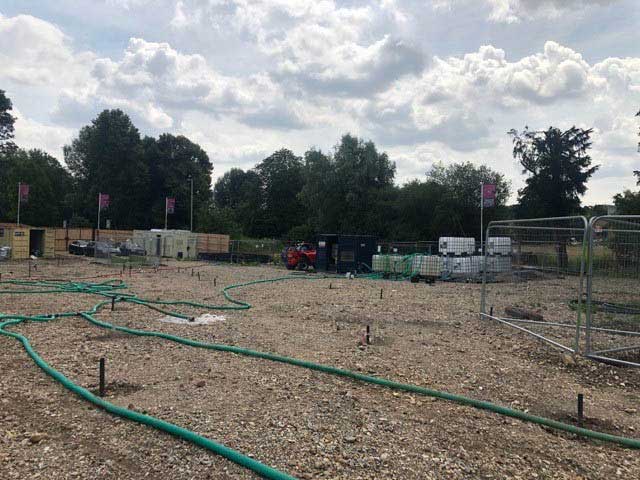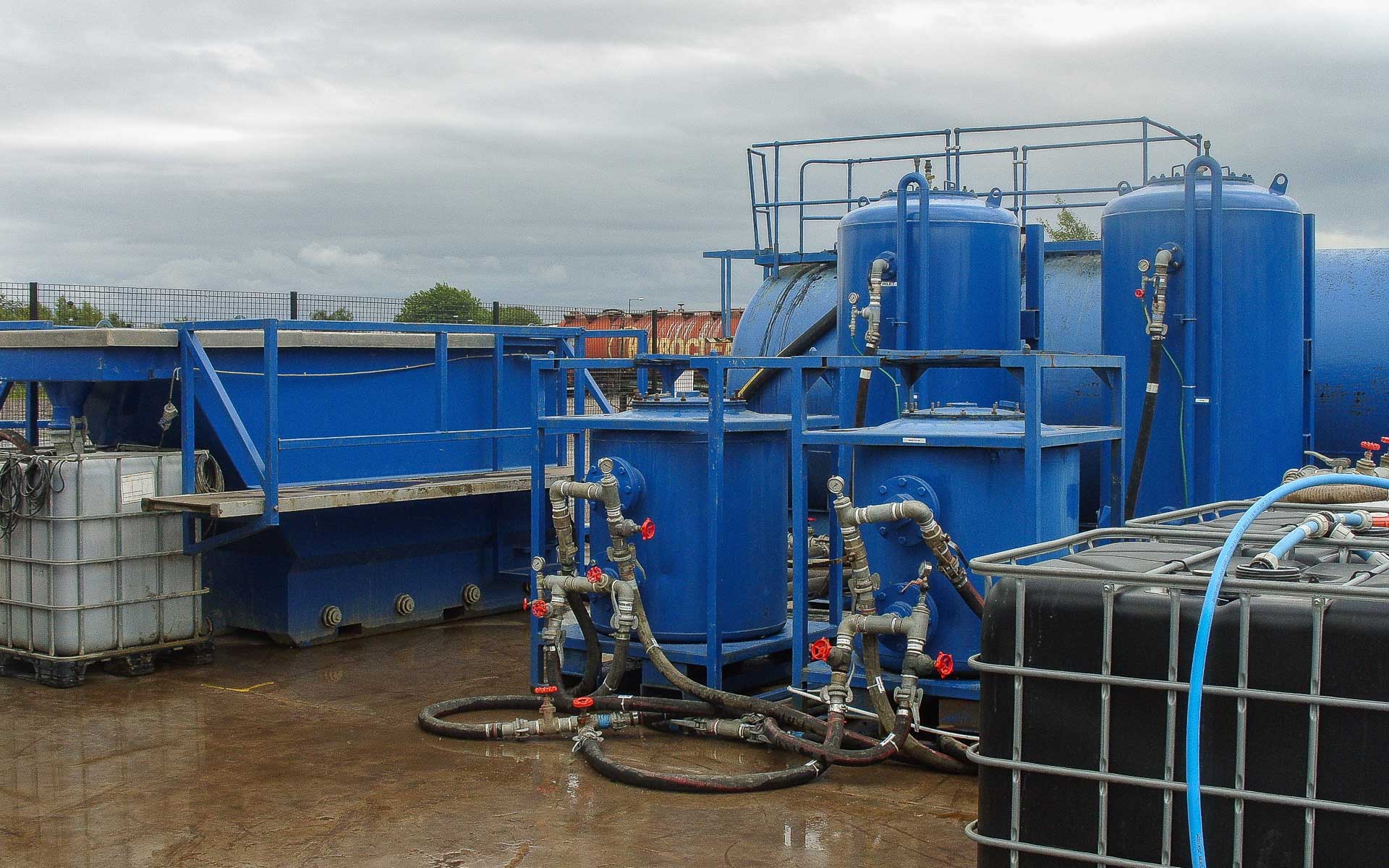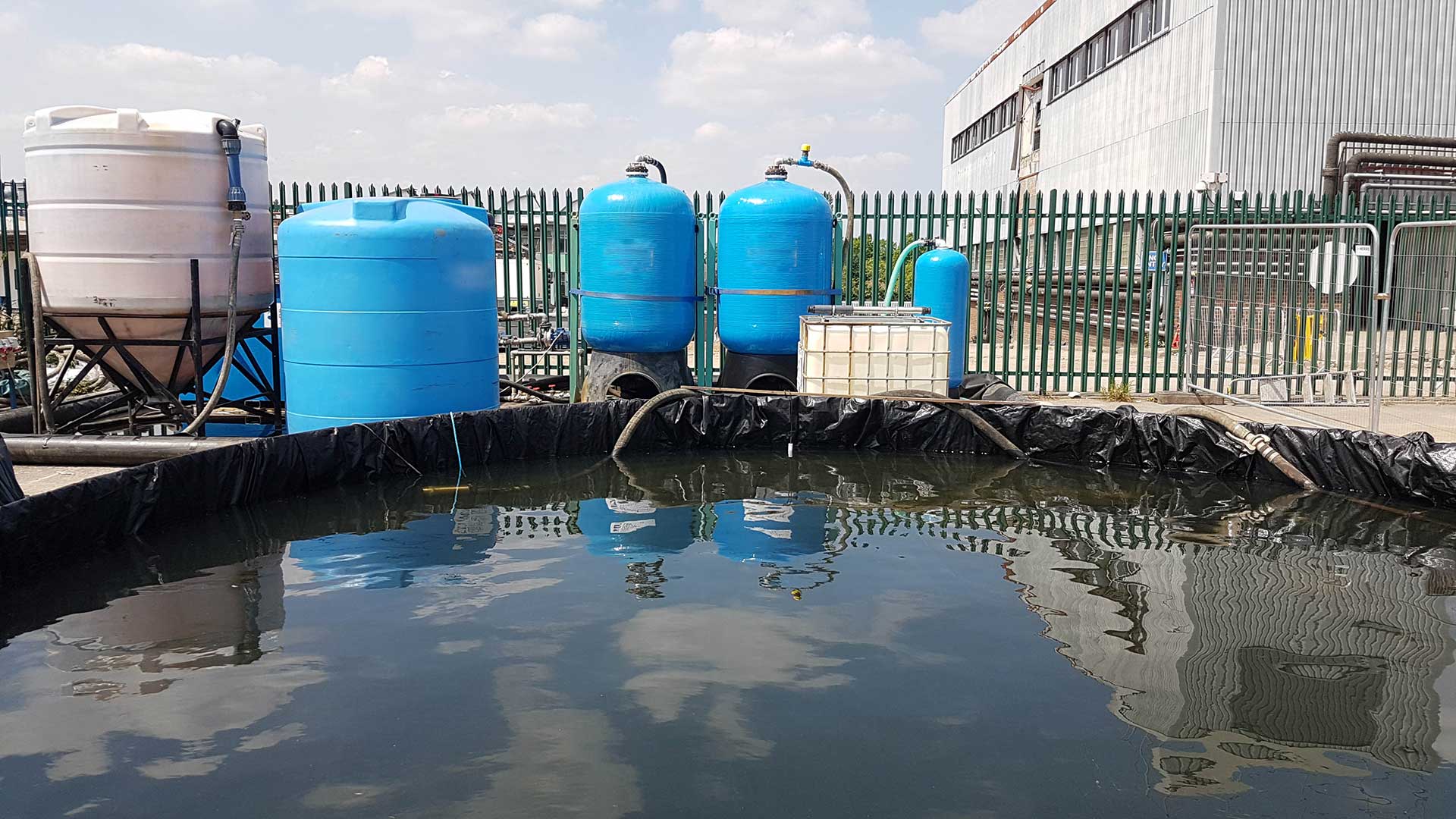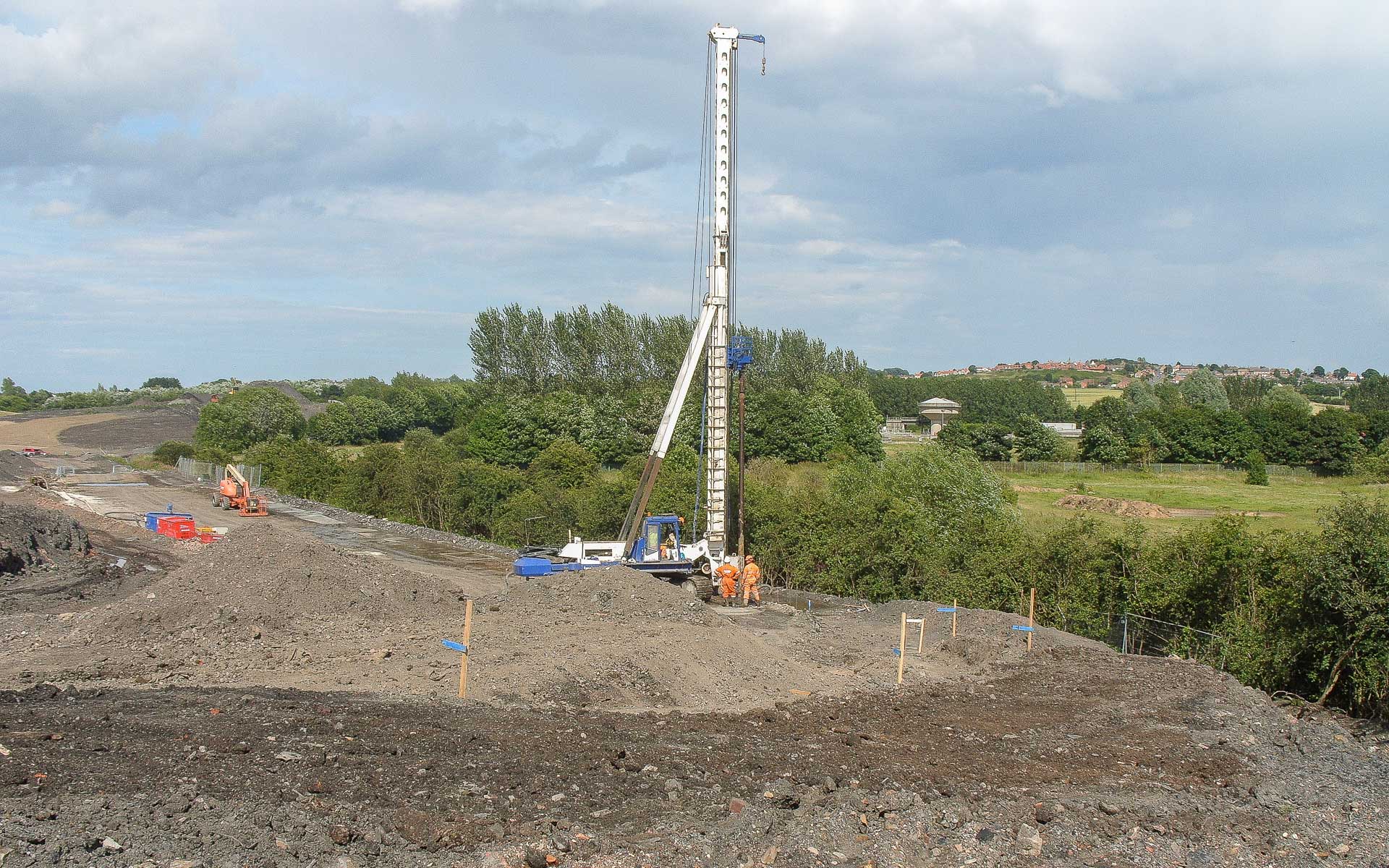GROUNDWATER TREATMENT
Ash Remediation Management offer capability for groundwater treatment systems in-situ (chemical oxidation and permeable reactive barriers / PRB) and above ground (pump and treat systems).
The systems can be designed to deal with a wide range of water borne contaminants including heavy metals, ammonium and TPH related compounds e.g. PAH and BTEX. The treatment systems could also be considered for effluent or waste waters found in non contaminated land related sectors.
CHEMICAL OXIDATION
Chemical Oxidation is an in-situ approach to groundwater remediation. The chemical oxidation treatment method is applied through a grid of small diameter injection wells that are installed across the contamination plume. A contaminant specific oxidising reagent is injected under pressure which facilitates the rapid and complete chemical destruction of a wide range of toxic organic compounds.
The benefits of in-situ chemical oxidation include rapid and extensive reactions with various contaminants as well as the degradation of many bio-recalcitrant organics. Furthermore, chemical oxidation remediation schemes are generally completed within short timeframes and due to the non invasive application site disruption is minimised.
PUMP & TREAT SYSTEMS
Pump and treat systems can be designed to deal with both organic e.g. TPH and BTEX, and inorganic e.g. metals, contaminated waters. It is an ex-situ method and is ideal to address contaminated wasters encountered during excavations as well as those present as a result of oil spills.
The pump and treat system is a multi-stage process and involves passing the impacted water through various filters. The specific filters used will be dependent upon the identified contaminants and examples include an oil water separator, sand, turbidex, activated carbon and ion exchange.
Pump and treat systems are normally considered to be of temporary nature and can be designed to separate and recycle oils in combination with the treatment of water to allow discharge under permitted conditions.
ADDITIONAL GROUNDWATER TREATMENTS
Additional groundwater treatment methods are based on in-situ permeable reactive barriers / PRB which involve the installation of passive and permeable reactive barrier systems. Permeable reactive barriers / PRB are designed to intercept and immobilise water borne contaminants at the periphery of the targeted sites to control and mitigate the impact on offsite receptors.
Reactive additives tailored and designed to the individual need are used within the permeable reactive barrier / PRB systems to deal with ongoing pollution risks. These PRB systems are installed using rotary soil mixing rigs that homogenise the soil with the additives.

